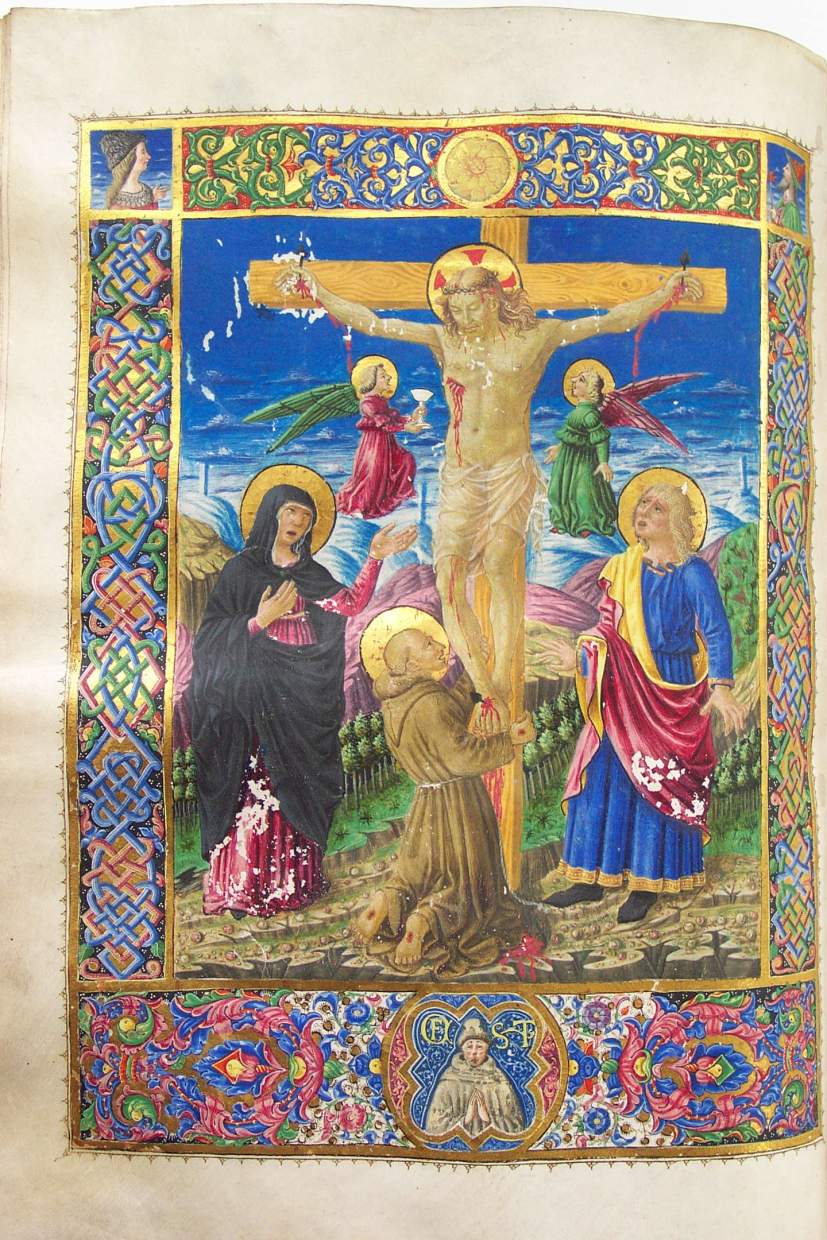

Missale Fratrum Minorum. Illuminated manuscript on vellum, written by the German scribe Henricus Haring for the convent of S. Francesco di Montone near Perugia. With magnificent miniatures by Bartolomeo Caporali, probably assisted by his brother Giapeco. Italy, Perugia, 1469.
Hide caption
This lavishly illuminated missal contains the texts for the entire liturgical year following the use of Rome, including a hymn, the calender, the Proprium de tempore from the first Sunday in Advent to the 24th Sunday after Trinity, the Proprium de Sanctis, the Commune Sanctorum, a mass for the consecration of the church and several votive masses and the mass for the dead.
Most of the extant works that are attributed to Bartolomeo Caporali are large-sized panel paintings. His activity as a miniaturist, however, is less clearly defined and is mainly linked to the works of his brother Giapeco who was a member of the corporation of miniaturists in Perugia.
As none of the miniatures in the present manuscript has been signed the determination of Bartolomeo’s share must rely on stylistic evidence. The most excellent part of the illumination clearly falls to Bartolomeo Caporali. His hand may be perceived first and foremost in the full-page miniature figuring the Crucifixion. The central element of the crucified Christ including Saint Francis kneeling at the foot of the cross is a masterpiece of rare quality. The body of Christ is carefully modelled in subtle shades of ochre, yellow and brown and attests intensive anatomic studies and a highly developed sense of naturalism.
The second artist who must have been responsible for the border decoration of the Crucifixion including the small vignettes obviously felt more at ease when confronted with paining on a smaller scale. It is to him that one must attribute also the full-page initial, the opening page with its sophisticated decoration and the 31 historiated initials. They depict figures all closely resembling each other in their facial types and their draperies that lack the voluminous quality of the ones described above.
A comparison of this part of the illumination with the surviving works by Bartolomeo’s brother Giapeco leaves no doubt about the identity of this second artist. Lacking the extraordinary talent of his brother Giapeco reveals himself as an experienced illuminator combining a special talent for highly sophisticated decoration with a sense for scenes of a more narrative character.
Thus the present manuscript is a fascinating product of a workshop in which two different artists worked side by side, dividing the illumination according to their respective specialities yet anxiously striving to create a harmonious whole.
This work is now in the collection of the Cleveland Museum of Art.



